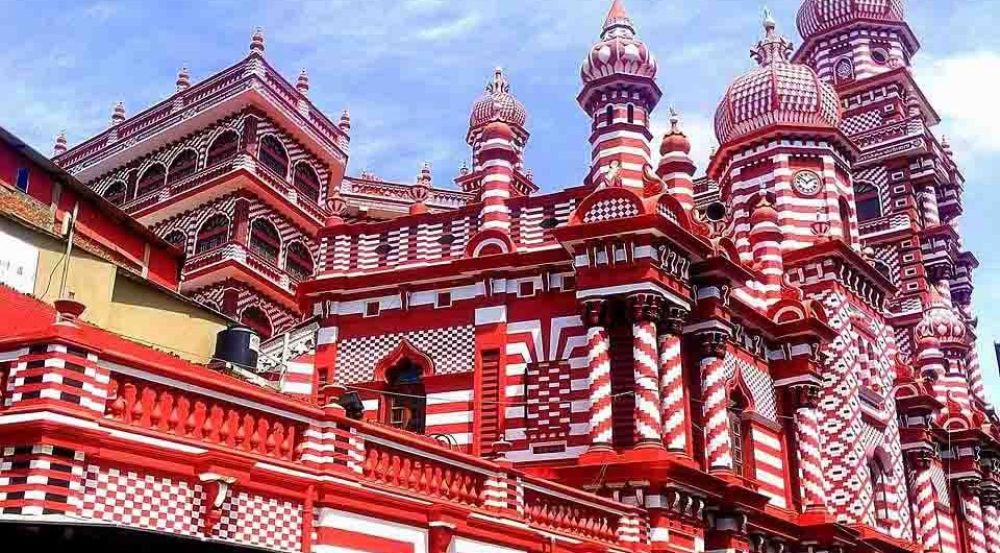

The Jami Ul-Alfar Mosque, more famously known as the Red Mosque, is an iconic historical landmark situated in the heart of Pettah, a bustling neighborhood of Colombo, Sri Lanka's capital city. This mosque is not just a place of worship but also an architectural masterpiece that draws tourists from around the world.
The Red Mosque was built in 1909 and stands out for its distinctive red and white stripes, intricate brickwork, and Moorish architectural influences. The design is credited to Habibu Labbe Saibu Labbe, a local architect whose imaginative vision resulted in one of the most visually striking buildings in Sri Lanka. The mosque’s architecture is a blend of indigenous Indo-Islamic and Indian Baroque traditions, making it a unique fusion indicative of the cultural melting pot that is Sri Lanka.
In the early 20th century, the Muslim community in Colombo needed a larger mosque to accommodate their growing numbers. The construction of the Jami Ul-Alfar Mosque answered this call. Initially, the mosque served as a significant landmark for sailors approaching the Port of Colombo, symbolizing their arrival in Sri Lanka. Over time, the mosque has become not only a spiritual haven but also a point of interest for both local and international visitors, signifying unity and the rich heritage of the country’s Muslim population.
The history of tourism at the Red Mosque coincides with the growth of Colombo as a tourist destination. As the city developed, so too did the international fascination with its cultural and historical sites. The mosque started to feature prominently in travel itineraries due to its unique aesthetic and cultural significance.
Tourists are welcome to visit the mosque outside of prayer times, though they are advised to dress modestly out of respect for the religious environment. The mosque's management has been accommodating to tourists, fostering a welcoming atmosphere that encourages cultural exchange and understanding.
In recent years, there has been a rise in 'faith-based' tourism, where travelers seek spiritual or religious connections during their journeys. The Jami Ul-Alfar Mosque has become a part of this trend, attracting visitors keen on exploring the spiritual heritage of the destinations they visit. Additionally, Instagram and other social media platforms have enhanced the mosque's visibility, with many visitors drawn to its photogenic façade and the opportunity to witness an active place of worship with a vibrant community.
As tourism continues to evolve, there is an increasing focus on sustainability and responsible travel. Efforts are being made to ensure that the visitor experience at historical sites like the Red Mosque does not detract from their cultural integrity or disrupt the local community.
The Jami Ul-Alfar Mosque continues to be one of the most beloved landmarks in Colombo. Its storied past, architectural grandeur, and cultural significance are invaluable to both the Muslim community and the fabric of Sri Lankan heritage, making it an essential stop for anyone exploring the historic and modern allure of Colombo.